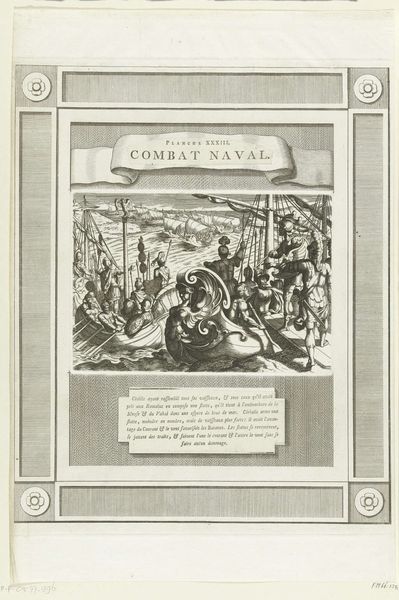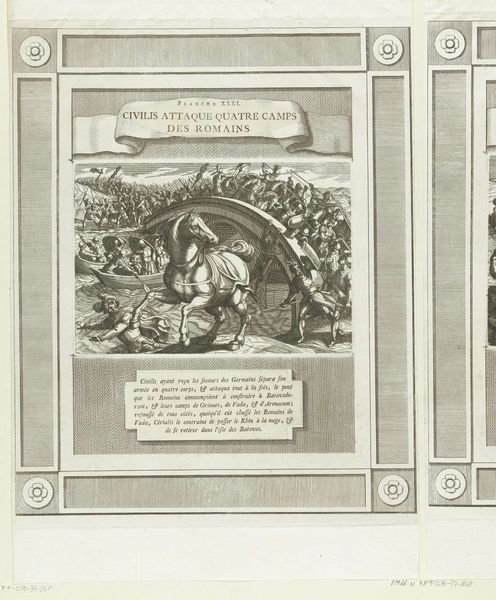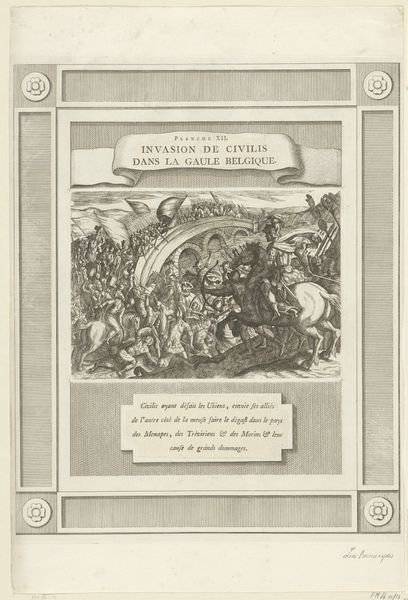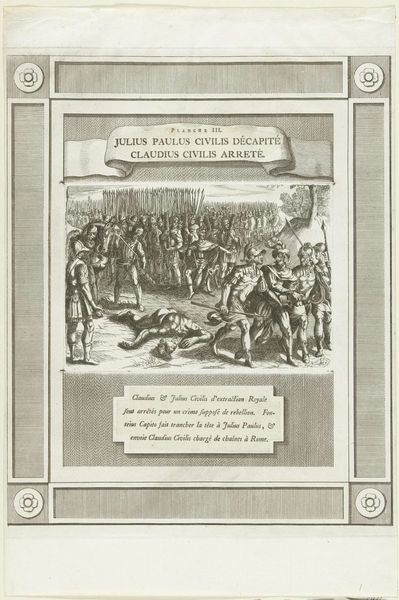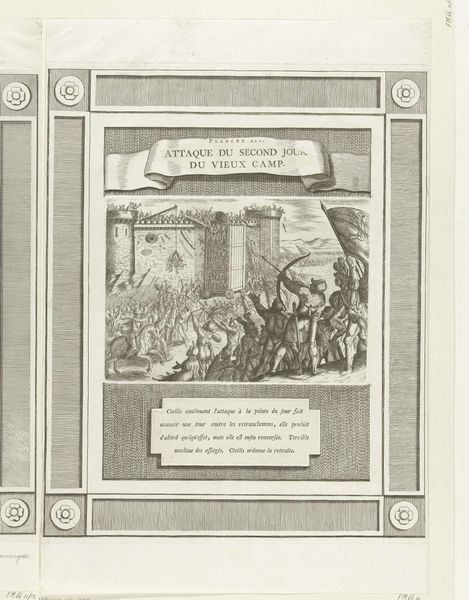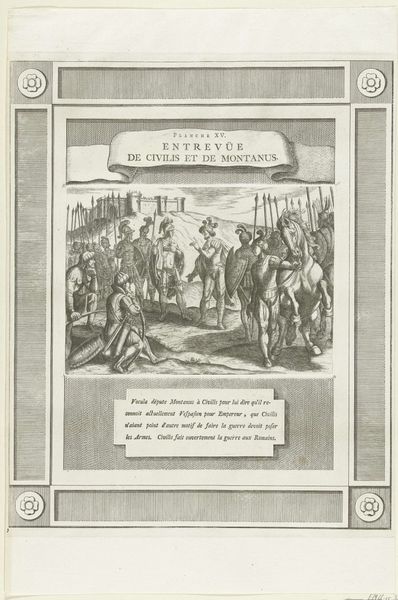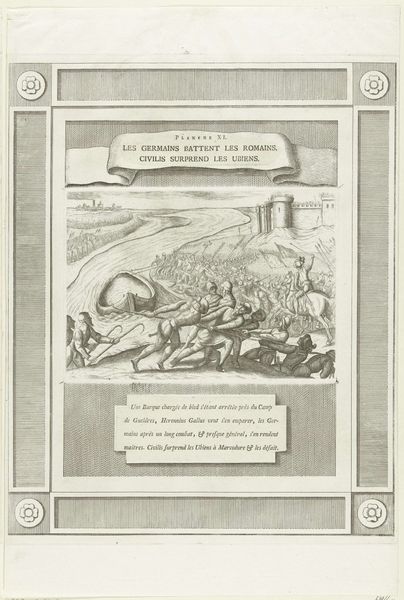
Romeinen verslagen bij een verrassingsaanval op hun kamp aan de Moezel, 69-70 1768 - 1770
0:00
0:00
Dimensions: height 140 mm, width 202 mm, height 370 mm, width 300 mm
Copyright: Rijks Museum: Open Domain
This print, made by an anonymous artist, depicts the defeat of the Romans in a surprise attack on their camp near the Moselle River in 69-70 AD. It reflects a long tradition in European art of representing historical or mythical battles. The image creates meaning through its visual depiction of chaos and violence, contrasting the supposed order of the Roman army with the wildness of their attackers. Made in the Netherlands, the print reflects the country’s own history of resistance against foreign powers, particularly Spain, during the Dutch Revolt. The image of Germanic tribes defeating the mighty Roman Empire would have resonated with a Dutch audience familiar with struggles for independence. To understand this print fully, we need to explore its place within the broader context of Dutch political and cultural history. We can consult archives, pamphlets, and other visual sources, to better understand the social and institutional forces that shaped its production and reception. Only then can we grasp its full meaning and significance.
Comments
No comments
Be the first to comment and join the conversation on the ultimate creative platform.
